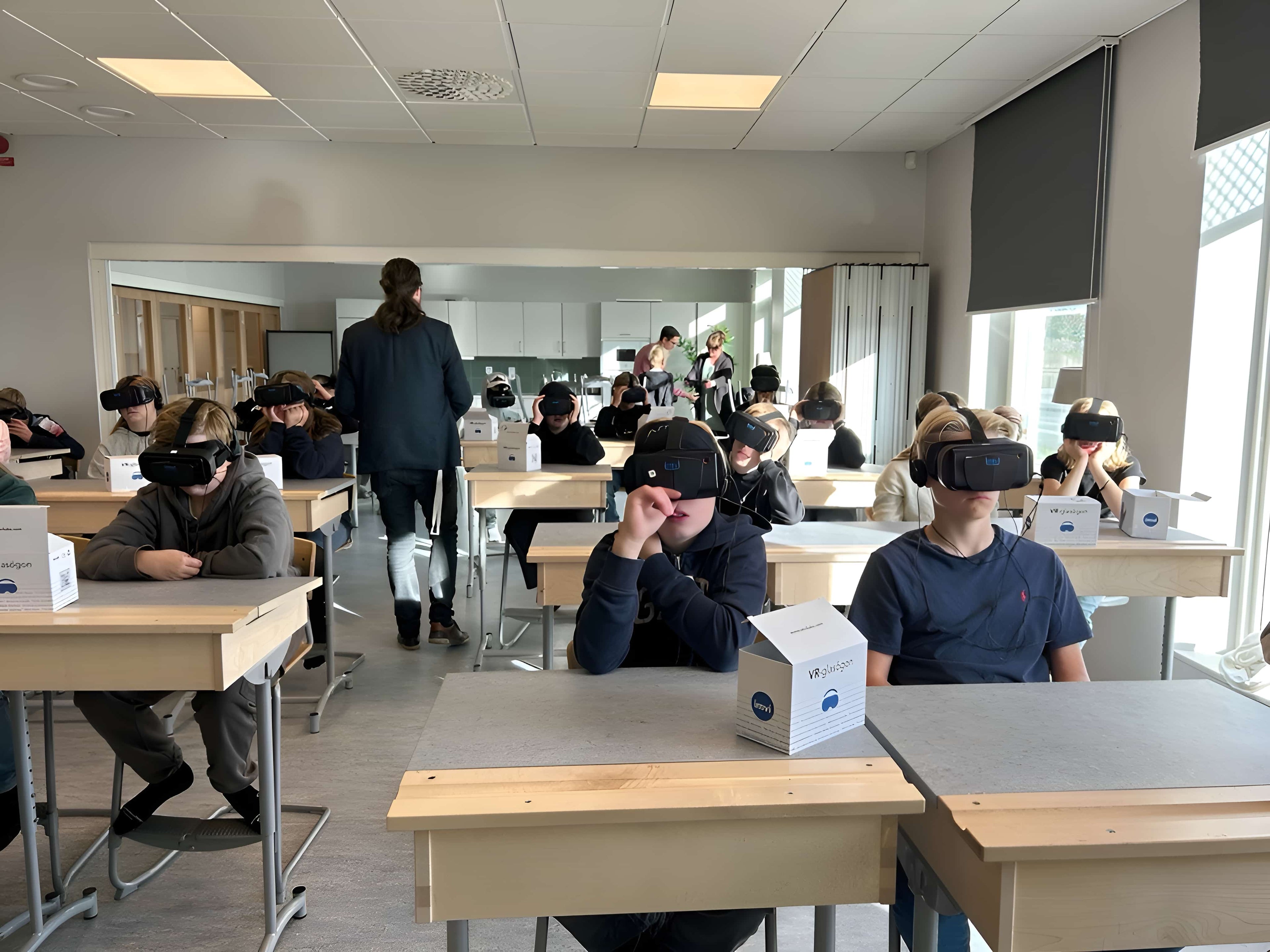Imvi is a VR-based training program developed together with researchers at Karolinska Institutet and experienced optometrists. The goal is to strengthen eye coordination and visual attention. Research shows that these factors affect both reading and concentration.
Rune Brautaset, Professor of Optometry says. “Orthoptic training has been used since the 19th century, with many studies showing improvements in visual acuity and attention in people with ADHD, dyslexia, brain trauma and post-covid. Imvis VR training is based on the same principles, but is digitalized, making the training fun and easy to follow. Studies show that Imvis training improves visual acuity for both people with and without visual acuity problems. Both visual acuity and visual attention are of great importance for reading ability and focus, where students with reading difficulties are overrepresented among those with impaired visual acuity.”
The program is primarily used by children and young people with reading difficulties. Most have no formal diagnosis. Few have diagnosed problems with reading comprehension, but many show signs of preclinical problems. This can affect reading fluency, perseverance and concentration. Many also have dyslexia, ADHD or concentration difficulties.
Three out of four double their reading speed on average
During the 2024/2025 school year, over 300 students have trained with Imvi in Sweden and Finland. Almost all of them have had reading difficulties.
- On average, 3 out of 4 students have doubled their reading speed after 12 weeks of training.
- Those who have not improved have often exercised less than recommended.
- Improvements have been seen both in individual efforts and in the whole class.
The results are confirmed in tests and by teachers who have followed the students' development.
Consensus – an often overlooked factor
Convergence is the ability of the eyes to work together and fixate on the same point. Deficits in convergence affect reading and focus – even if it is not noticeable during a regular eye exam.
Preclinical disorders are common. They do not meet the requirements for a diagnosis but still affect students' reading. They are rarely detected and do not lead to interventions.
Research showing a link:
- Scheiman et al. (2015) show that classic consensus training (e.g. Brock string and pencil push-ups) is effective, but requires careful monitoring to be effective ( PMC4278667 )
- Ossian Nguyen, Karolinska Institutet (2025) shows that Imvis VR training provides measurable improvements in convergence insufficiency (the ability of the eyes to converge, i.e. the ability to direct the gaze inwards and outwards) after three weeks in people with convergence insufficiency ( report )
- Barsoum & El Idrissi (2022) found similar improvements with Imvi after two weeks of training even in people without diagnosed vision problems ( report )
- Grisham & Simons (1987) show a strong correlation between binocular vision problems and reading difficulties ( Journal of the American Optometric Association )
Increased screen time – increased strain on consensus
Mobile phone use and screen time at close range physically affect the eyes. This increases the risk of nearsightedness, especially in young people. Such problems can affect reading – without being visible in regular vision checks.
What do educators who have used Imvi say?
Here are some voices from school staff with experience of the training:
“We love your product and are so grateful for the amazing progression our students have made.”
– Stojanka Drinić, principal, Östermalm School, Stockholm
“I see students improving both their confidence, reading fluency and comprehension. One student said that ‘the letters are stuck now’.”
– Moa Ahrnbom, teacher, City of Stockholm
“There is a before and an after of Imvi. My daughter increased her reading speed by 113%.”
– Johanna Lindgren Chin, special education teacher and pedagogue, Stockholm
See these and several educators talk about Imvi ( here )
Conclusion: start with vision – together with pedagogy
Reading and writing difficulties rarely have a single cause. But if the visual system is not functioning optimally, it becomes more difficult to absorb the teaching – no matter how good it is.
Therefore, we recommend that schools:
- Starts by examining vision in reading and writing difficulties
- Provides visual training combined with educational interventions, especially in the early school years
- Sees vision training as a way to increase the effect of existing teaching, not as an alternative to it
Read more about the research behind Imvi:
www.imvilabs.com/research
